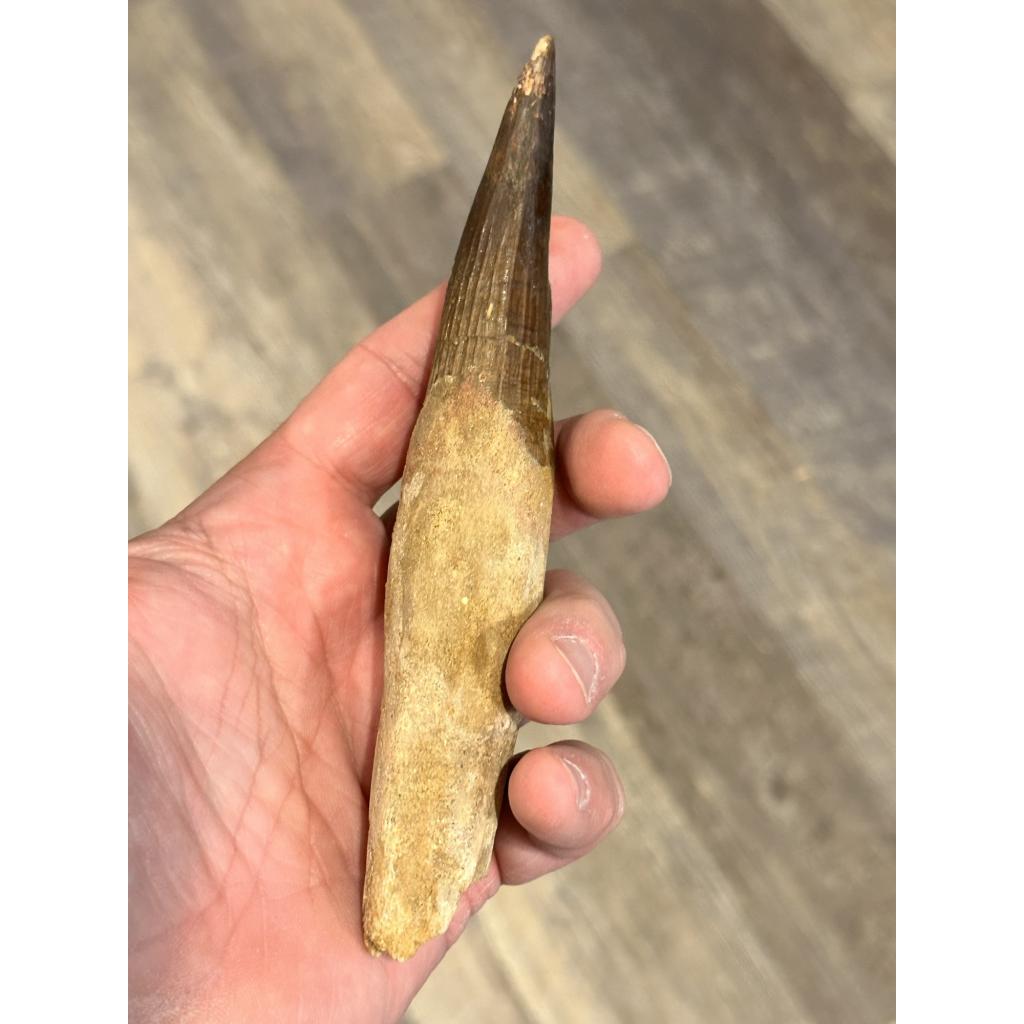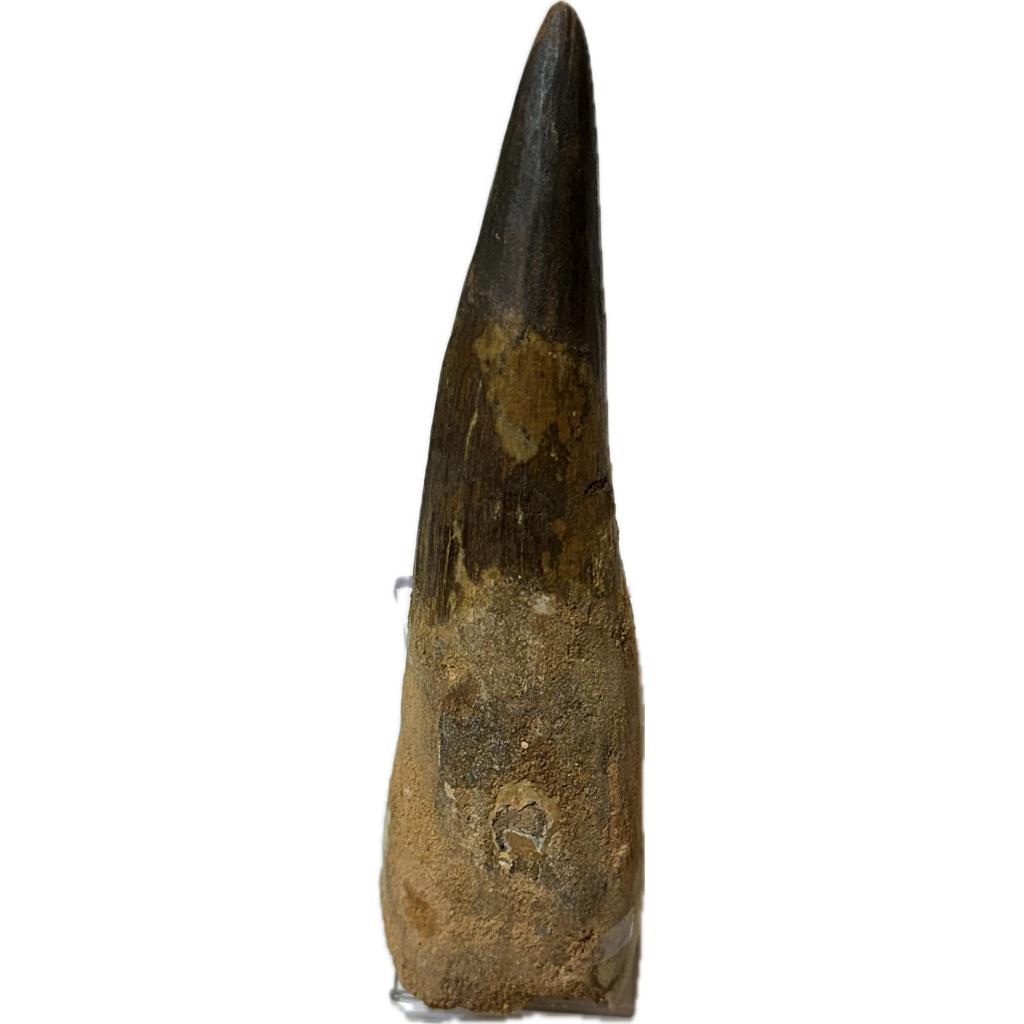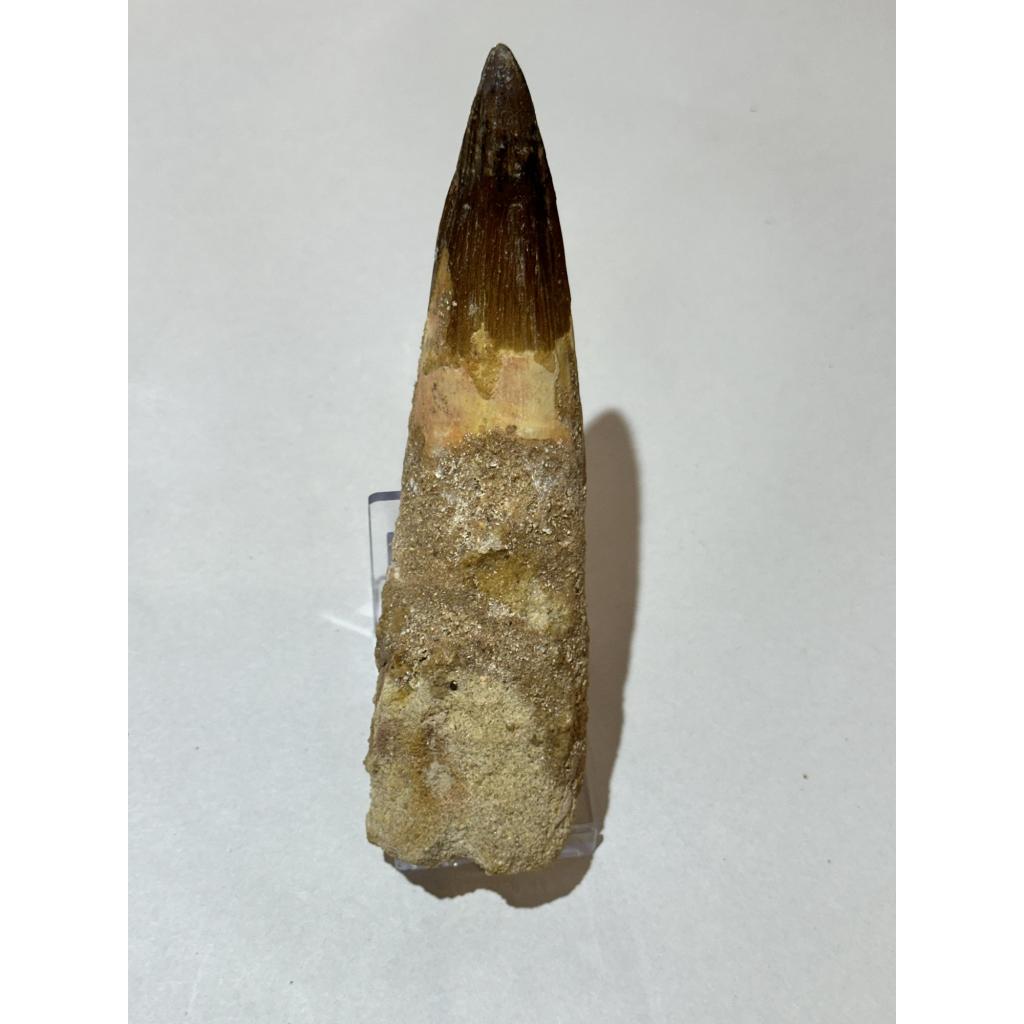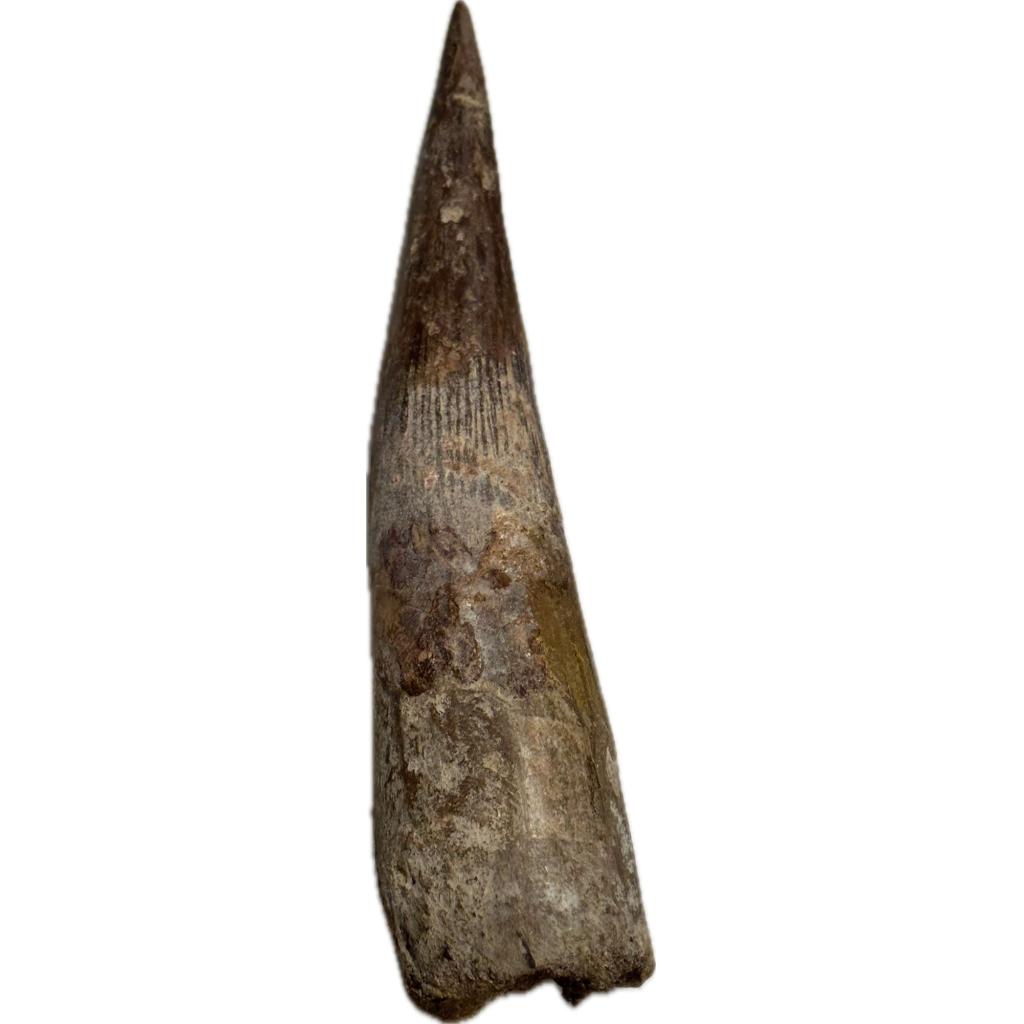
Spinosaurus, meaning “spine lizard,” was a massive predatory dinosaur that lived during the Cretaceous period, around 112 to 93 million years ago. It belongs to the group of theropod dinosaurs, characterized by their bipedal stance and carnivorous nature. Spinosaurus is particularly notable for its large size, unique physical features, and the distinctive sail-like structure on its back.
One of the most striking features of Spinosaurus is its impressive set of large teeth. These teeth were well adapted to its carnivorous diet, and they played a crucial role in capturing and consuming prey. The teeth of Spinosaurus were conical, robust, and designed for gripping and tearing flesh. They varied in size, with the largest teeth located at the front of the jaws.
The dental adaptation of Spinosaurus provides insights into its hunting and feeding behaviors. The size and structure of its teeth suggest that Spinosaurus primarily targeted aquatic prey, such as fish. The conical shape of the teeth would have been effective in grasping slippery aquatic animals, and the robust nature of the teeth indicates their ability to withstand the forces exerted during the struggle with prey.
The large teeth of Spinosaurus were well-suited for a piscivorous (fish-eating) lifestyle, which aligns with the evidence suggesting that Spinosaurus lived in or around aquatic environments. Fossil discoveries and anatomical studies have indicated that Spinosaurus had adaptations for a semi-aquatic lifestyle, including elongated jaws and conical teeth reminiscent of modern crocodiles. These adaptations support the idea that Spinosaurus may have spent a significant amount of time in water, hunting for fish.
The hunting strategy of Spinosaurus likely involved ambushing aquatic prey near the water’s edge. Its long and slender jaws, combined with the large teeth, allowed it to snatch fish with precision. The robust teeth were crucial for securing a grip on struggling prey, preventing potential escape. The presence of such specialized adaptations in its dentition underscores the diversity of feeding strategies among theropod dinosaurs.
The dental features of Spinosaurus also shed light on the broader ecological context of the Cretaceous period. The coexistence of large theropods with different dietary preferences, such as Spinosaurus and the more well-known Tyrannosaurus rex, suggests a complex ecosystem with niche partitioning. While T. rex was adapted for terrestrial hunting, Spinosaurus occupied a distinct niche as a semi-aquatic predator, minimizing competition for resources.
The study of Spinosaurus teeth has not only enhanced our understanding of its feeding habits but has also contributed to debates about its overall anatomy. Fossil evidence, including dental remains, has sparked discussions about the potential size and proportions of Spinosaurus, leading to reconstructions that differ from traditional depictions of theropod dinosaurs.



